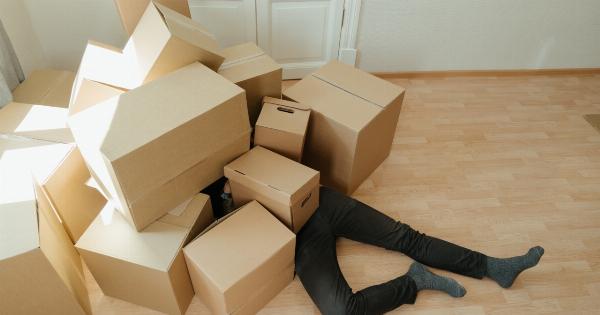Bicycling is a popular form of exercise for men as it helps in maintaining overall fitness and cardiovascular health. However, few men understand the impact of bicycling on their sexual health and reproductive function.
This comprehensive guide provides information on the effects of bicycling on male sexual health and ways to prevent potential problems.
What are the Potential Problems?
Bicycling can put pressure on the perineum, the area between your anus and scrotum, which can cause several issues over time. Here are some potential problems:.
1. Erectile Dysfunction
Studies have shown that bicycling for extended periods can cause temporary or permanent damage to blood vessels in the penis, leading to erectile dysfunction.
This condition occurs when a man has difficulty in achieving or maintaining an erection firm enough for sexual intercourse. The pressure from the bicycle seat on the perineum and compression of blood vessels and nerves in the genital area while cycling may contribute to this.
2. Reduced Sperm Quality
Another potential issue with bicycling is reduced sperm quality. Long hours of cycling can increase the temperature around the scrotum and decrease blood flow, which can affect the production of sperm.
As a result, the quality and quantity of sperm can decline, leading to infertility.
3. Genital Numbness
Prolonged bicycling can cause numbness or tingling in the genitals. This happens when the nerves around the perineum area get compressed due to the pressure of bicycle seats.
Numbness can lead to difficulty in achieving orgasm and reduced libido in some men.
4. Prostate Problems
Bicycling can cause inflammation or swelling of prostate gland in some men. When the prostate gland gets inflamed, it can cause pain during urination, pelvic discomfort and other urinary problems.
5. Altered Testosterone Levels
Extreme pressure on the perineum can also lead to the production of stress hormones in the body, like cortisol, which can affect testosterone levels in men.
Testosterone is a hormone responsible for male sexual development, and sustained drop in its levels can cause fatigue, irritability, and low sex drive.
How to Prevent Potential Problems?
Bicycling will not necessarily lead to sexual problems if precautions are taken. Here are some ways to lessen the risk:.
1. Proper Bike Fit
Make sure your bike is well adjusted so that your body is in the right position. Ensure that the saddle (bike seat) is at the right height, distance from the handlebars, and alignment.
This will help you avoid putting an excessive amount of pressure on the perineum when cycling.
2. Suitable Saddle
Choose a saddle that is wide and properly cushioned, with a cut-away or channel in the middle to alleviate pressure and prevent numbness. Some saddles are designed with a noseless space that allows your perineum to hang freely while cycling.
3. Take Breaks
It’s essential to take frequent breaks during long biking rides. This gives your body enough time to recover and reduce pressure on the perineum.
Stand up on the pedals when riding down-hills or on flat surfaces to change the pressure on your perineum.
4. Wear Proper Attire
Wearing loose, comfortable clothing is essential for good blood flow and breathability. Tight-fitting shorts or underwear can increase the temperature around the perineum and reduce blood flow, causing fertility issues.
5. Perform Pelvic Floor Exercises
Working out the muscles of your pelvic floor using Kegel exercises can strengthen them and reduce the risk of impotence or erectile dysfunction from cycling.
These types of exercises involve contracting and relaxing the muscles of your pelvic floor to keep them strong, creating better blood flow and reducing pressure.
Conclusion
Bicycle riding is an excellent form of exercise and can promote overall cardiovascular health in men. However, prolonged hours of cycling can impact sexual health and lead to erectile dysfunction and reduced sperm count.
It’s important to follow the preventive measures mentioned above to reduce the risk of developing sexual problems while cycling.






























